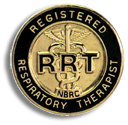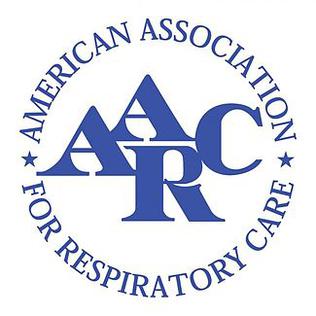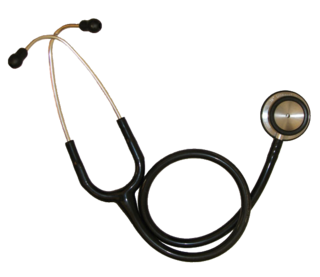
Physical therapy (PT), also known as physiotherapy, is one of the allied health professions that, by using evidence-based kinesiology, electrotherapy, shockwave modality, exercise prescription, joint mobilization and health education, treats conditions such as chronic or acute pain, soft tissue injuries, cartilage damage, arthritis, gait disorders and physical impairments typically of musculoskeletal, cardiopulmonary, neurological and endocrinological origins. Physical therapy is used to improve a patient's physical functions through physical examination, diagnosis, prognosis, physical intervention, rehabilitation and patient education. It is practiced by physical therapists.

A respiratory therapist is a specialized healthcare practitioner trained in pulmonary medicine in order to work therapeutically with people suffering from pulmonary disease. Respiratory therapists graduate from a college or university with a certification in respiratory therapy and have passed a national board certifying examination. The NBRC is the not-for-profit organization responsible for credentionaling the seven areas of Respiratory Therapy in the United States.
A Doctor of Physical Therapy or Doctor of Physiotherapy (DPT) degree is a qualifying degree in physical therapy. In the United States it is an entry-level professional degree, while in the United Kingdom it includes advanced professional training and doctoral-level research. A DPT is a practitioner who is educated in many areas of rehabilitation.

A registered respiratory therapist (RRT) is a certification for Respiratory Care Practitioners. In the United States, the certificate for the RRT is issued by the National Board for Respiratory Care after passing the Therapist Multiple-Choice Examination NBRC-TMC and Clinical Simulation Examination NBRC-CSE examinations. Eligibility for the NBRC-CSE examination is based on scoring high enough on the NBRC-TMC, and holding at least an Associate of Science in Respiratory Care. In Canada the RRT certification is granted by examination from the Canadian Society of Respiratory Therapists. Internationally, respiratory care is governed by local governments and certification or license to practice as a respiratory practitioner is managed locally without the use of separate organizations as in the United States and Canada.
Western Schools is a company based in West Bridgewater, Massachusetts, USA, that provides continuing education programs to health care professionals. The company was founded in 1979 and was a division of Specialty Commerce Corp. until August, 2018, when it was bought by Colibri Group.
A Certified Respiratory Therapist (CRT), formerly Certified Respiratory Therapy Technician (CRTT), is a therapist who has graduated from a respiratory therapy program at a university or college and has passed a national certification exam. A CRT or RRT is typically expected to adjust, modify or recommend therapeutic techniques within well-defined procedures based on a limited range of patient responses. In the healthcare setting, usually required supervision by a physician experienced in respiratory care.
Health professional requisites refer to the regulations used by countries to control the quality of health workers practicing in their jurisdictions and to control the size of the health labour market. They include licensure, certification and proof of minimum training for regulated health professions.
American Career College is a private, for profit vocational college that specializes in health care training programs. It was founded by David Pyle in 1978. American Career College offers both Diploma and Associate Degree programs through three campuses in the Los Angeles metro area.
In the United States, Certified Pulmonary Function Technician (CPFT) is a medical technician who is at least a Certified Respiratory Therapist and at most a Registered Respiratory Therapist that has successfully passed the national certification exam. A pulmonary function technician assists a Registered Pulmonary Function Technician with performing function tests on patients. Tests are done both inpatient and outpatient and in specialty clinics such as asthma clinics and sleep centers.

The American Association for Respiratory Care (AARC) is a non profit organization and is the only professional organization supporting Respiratory Care in the United States. In addition to attempting to help lobby for beneficial legislation nationally and locally, the AARC is trying to promote the profession as a whole to increase interest and membership. The AARC began in 1943, as the Inhalation Technician Association and has evolved rapidly and repeatedly since.
The National Board for Respiratory Care (NBRC) Inc. is a non-profit organization formed in 1960 with the purpose of awarding and maintaining credentialing for Respiratory Therapists in the United States. The NBRC is the only organization in the United States which develops certification examinations for Registered Respiratory Therapists (RRTs) and Certified Respiratory Therapists (CRTs). The NBRC also offers additional specialization credentialing for respiratory practitioners that hold its certifications. The CRT and RRT designations are the standard credential in respiratory care for licensure requirements in the portions of the United States that have enacted a Respiratory Care Act. States that license respiratory therapists sometimes require the practitioner to maintain their NBRC credentialing to maintain their license to practice. The NBRC is headquartered in Overland Park, Kansas. It has been in the Kansas City metropolitan area since 1974. The NBRC is located at 10801 Mastin St, Suite 300, Overland Park, KS 66210.
A polysomnographic technologist performs overnight, daytime, or home sleep studies, polysomnograms, on people with suspected sleep disorders. In the United States and worldwide, the process for becoming a polysomnography technician or technologist is primarily either on-the-job or certificate based. There are associate level programs offered by for-profit schools that award a degree in polysomnography technology in the United States, though not necessary to attain employment with the same title. After an education program or adequate on-the-job training is complete, the student is eligible for credentialing by the Board of Registered Polysomnographic Technologists (BRPT), a non-profit credentialing agency based in the United States but serving polysomnographers worldwide. The BRPT maintains credentialing for over 35 countries including Canada and the United States as well as over 17,000 individuals working in the industry.
The Canadian Society of Respiratory Therapists (CSRT) was founded in 1964 as the Canadian Society of Inhalation Therapy Technicians. Currently it is the Canadian national professional association for respiratory therapists.
A Pulmonary Scientist is a health care occupation in the field of diagnostic studies related specifically to pulmonary function, the term Respiratory Scientist may also refer to a Pulmonologist who holds a medical degree and a doctoral degree (MD-PhD). Internationally pulmonary scientists have many different titles, such as: pulmonary function technologist, respiratory scientist, pulmonary scientist, cardiopulmonary specialist and in some places registered respiratory therapists are also used in the role of pulmonary scientists. A physician in respiratory science is generally referred to as a physician in their title.
A Sleep disorder specialist (SDS) is a Registered Respiratory Therapist (RRT-SDS) that has successfully passed the certification examination NBRC-SDS. The respiratory therapist may also be a Certified Respiratory Therapist (CRT-SDS) under certain conditions. The sleep disorder specialist scores and performs polysomnography and also assists in diagnosing and preparing a treatment plan for the condition. Some of the conditions the sleep disorder specialist helps evaluate and treat are; insomnia, sleep apnea, restless legs syndrome, and narcolepsy.
Healthcare professional credentials are credentials awarded to many healthcare practitioners as a way to standardize the level of education and ability to provide care.

The American Respiratory Care Foundation is a non-profit organization founded by the American Association for Respiratory Care formed to provide funding for research in the field of pulmonology and respiratory care. Formed in 1974 as the American Respiratory Therapy Foundation and then changed to the American Respiratory Care Foundation in 1986. The ARCF is a partner with the United States Environmental Protection Agency, who has awarded grants to the ARCF in order to help fund research directly related to asthma and asthma education.
The Bachelor of Science in Respiratory Care is a four-year academic degree in the science and principles of respiratory care, granted by a tertiary education university or similarly accredited school. In the United States one is eligible to sit for the NBRC-WRE licensing examination to become a Registered Respiratory Therapist after graduating from either a two-year program with an associate degree or from a four-year program with a bachelor's degree, the bachelor's degree prepares respiratory practitioners for a professional role away from the bedside with coursework in science, research, leadership, and informatics.
An Associate of Science in Respiratory Care (ASRC) is an entry-level tertiary education respiratory therapy degree. In the United States, this type of degree is usually awarded by community colleges or similar respiratory schools. Some four year colleges also offer this degree. Students in the United States awarded an Associate of Science in Respiratory Care are qualified to sit for the NBRC-ELE and then the NBRC-WRE and NBRC-CSE then apply for state licensure as a Registered Respiratory Therapist.
College of Respiratory Therapists of Ontario (CRTO) regulates the profession of respiratory care by setting out requirements for entry to practice in Ontario, Canada. Authorized by the legislation "Regulated Health Professionals Act" in Ontario, the role of the College of Respiratory Therapists of Ontario is to regulate the practice of respiratory therapy and govern the registered respiratory therapists. Respiratory therapy has been an established health care profession in Canada since 1964.














